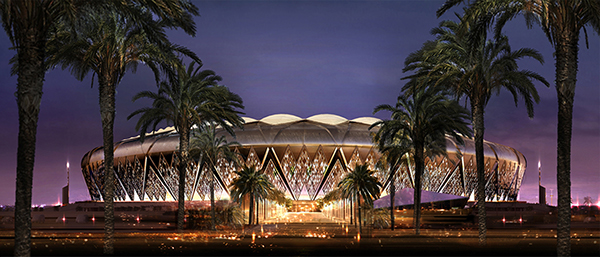- July 3, 2017
- Posted by: SportsV
- Categories: Event News, Features, Home News, Industry News, Interviews, News
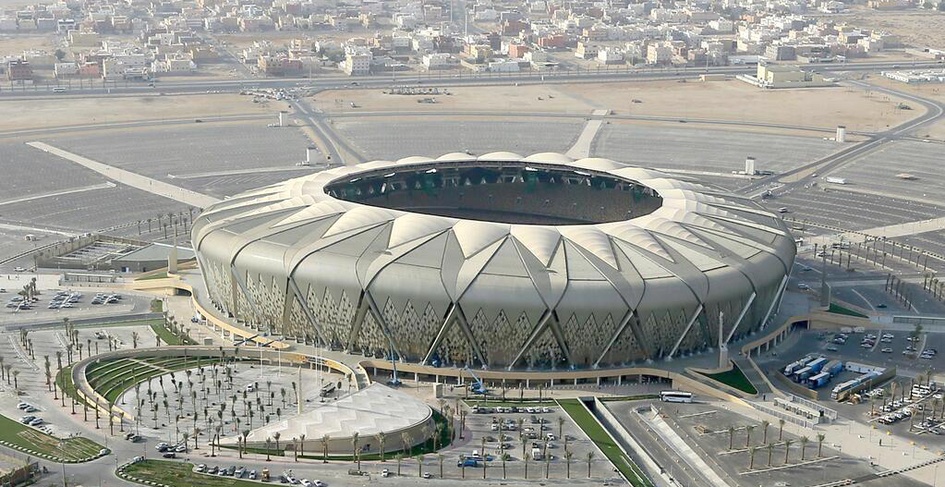
In this latest industry interview, Katie McIntyre talks in-depth with Ian Hardcastle, Event/Crowd Safety Manager at King Abdullah Sports City in Saudi Arabia, which he will be leaving shortly to take up the role as the General Manager of ESMME, which is the H&S arm of gulf crewing in Dubai.
As a Crowd Safety specialist working for Saudi Aramco at King Abdullah Sports City (KASC) in Jeddah, Saudi Arabia, what are your main responsibilities?
My responsibilities are quite simple really, and that is to safely manage every spectator that visits King Abdullah Sports City (KASC). The reality of my responsibility and the challenge has always been how I do it. One of the major challenges I had when I arrived was that nobody here had ever been involved in or had any experience with crowds, events or stadiums, so to convince people that what I was doing was right was tough at times, especially in the early days. I am employed by Saudi Aramco, which as you know is the oil company. Aramco built the stadium by Royal decree, and from start to finish the project took just 14 months. I am assigned to the Operation and Maintenance Department. Everyone in my department, apart from me, has been or was re-assigned to the Stadium project from their respective oil and gas installations from all over the Kingdom. Few had ever been in a stadium before let alone worked in one. In the Saudi culture you have to build a relationship in order to earn respect. In the beginning nobody knew me and here I was this guy from UK telling all the heads of Police, the Civil Service and even Royalty that this is how we need to do certain things. Saudi Aramco is all about processes and sometimes red tape and bureaucracy slows things down. On occasions it tends to be the Aramco way or no way! Many people in the organisation were not familiar with other methods and other ways of achieving certain goals, most have never worked for any other company apart from Saudi Aramco. So I wasn’t received with open arms by everyone at first, but I slowly broke down the barriers and worked hard on building a rapport with anyone and everyone. Establishing a relationship with the right people was essential.
I am involved in every aspect of the stadium match day operation from start to finish. This can be anything from working with the sponsors on where best to position their activations to deciding what time the floodlights come on. On game day, I assume the duties of the Event Control Centre Commander, which involves safety preparations and inspections, I also brief and advise the Emergency Services Commanders on all aspects of the match day operation. There is not an element of the stadium that I don’t touch really, but my main area of responsibility will always be the safety of the spectators and that includes those who visit the Sports Arena or Sports Hall as it’s known for shows or concerts. During non-match days, I switch back to my Saudi Aramco role and deal with all the day-to-day safety issues like contractors work permits, HSE, fire drills and safety inspections. My job is so diverse, no two days are alike. As a team we have come a long way and we have accomplished so much. There’s always improvements to be made and can’t become complacent when you are in the spectator safety game. Originating from Liverpool and with the backdrop of Hillsborough is a constant reminder of that.
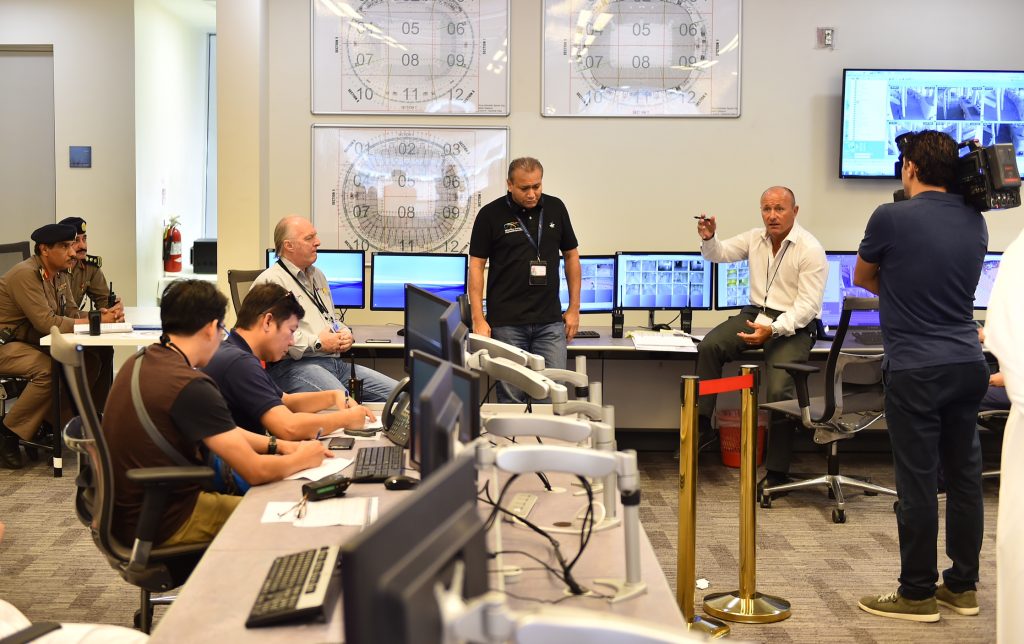

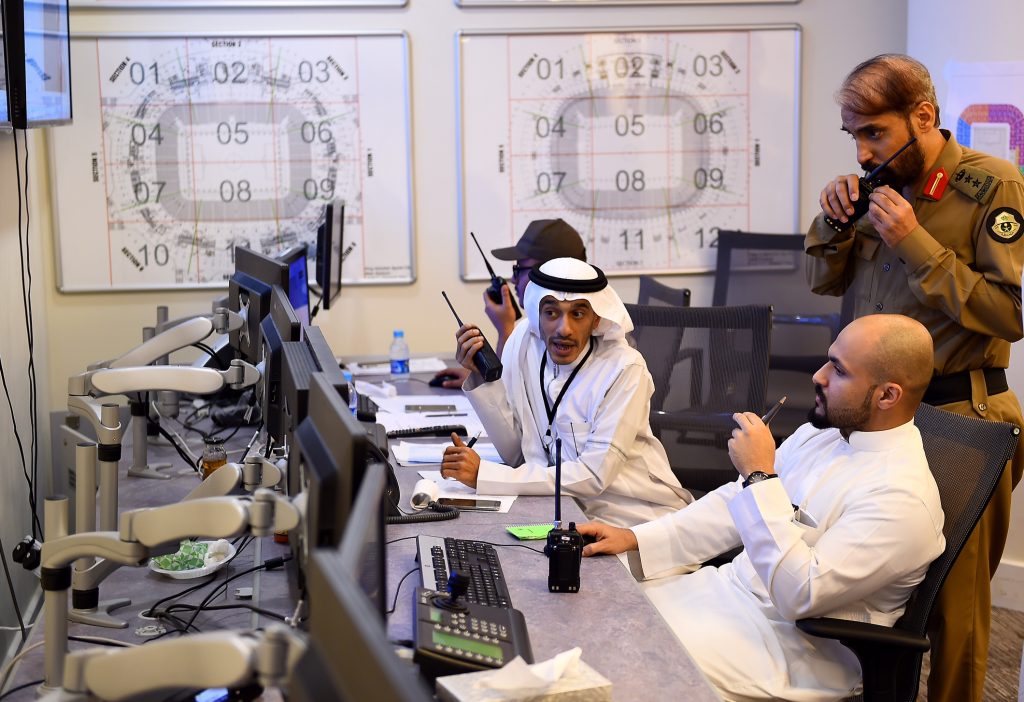
You designed, implemented and managed the safe entry, circulation and exit of all spectators at KASC; the newest all-seater football stadium in the Kingdom of Saudi Arabia, with a capacity of 61,000. What were the main challenges and how did you come up with the most suitable plan of action?
That’s a great question! How long do you have? I arrived shortly after the Inauguration Game in July 2014. The Inauguration game had taken place a few months earlier in May. This was, and still is the newest stadium in Saudi Arabia. It was the vision of King Abdullah to have a ‘Jewel in the Crown’ Facility for all Saudis to watch, play and enjoy sports. The Inauguration game was huge. On the day, it is estimated by some that approximately 80,000 people crammed into the stadium. I have seen some of the footage, the spectators swarmed in from every angle. The outer perimeter gates opened and it was like a scene from Zulu Dawn. They used ladders and scaled the walls and watched the opening ceremony (attended by the King) and the game from every conceivable vantage point. They got onto the roof, the giant screen, absolutely everywhere. There were many problems, including the ticketing strategy. The huge crowd were made to wait in the searing Saudi sun at the perimeter walls, and the dangerous turnstile entry system that was, and to this day still is a concern with its serious design flaws. In my opinion, it was a miracle that nobody was seriously injured or even killed that day.
The first challenge when I arrived was damage limitation, and to try and design an entry system that was simple and manageable. I had to decide what was life threatening critical and what wasn’t. The entry system and turnstiles were definitely life threatening critical, and I made it my highest priority. I needed to train the Police and Stewards, but more importantly I needed to educate the crowd and try to initiate a culture shift. You see, Saudis don’t like to queue, and some believe they have more rights ‘wasta’ than others. You only need to drive here for a day to experience that. I needed to ‘train’ the crowd. I needed to create a crowd flow system, and get all the key personnel to accept it and trust in it. The other major issue I had was that I didn’t have any fencing or crowd safety barriers to do it. I put in a huge order for the fencing but it would take up to 8 months to arrive. I ended up installing 2,700 traffic barriers that were surplus from the stadium build. These were the red hollow ones that you fill with sand or water. I installed these in the blistering heat and had to rearrange them for every game for a full season. Often they would be blown because of the wind or the water would leak out, the spectators would push them aside and jump the queue or climb the walls. After every game they were scattered all around. There was also a degree of apathy from some sections of the Police, some just didn’t care and weren’t bothered who got in. Most of the stewards were more interested in watching the game or getting their friends in for free. Many would change out of their uniform and merge in with the rest of the crowd and sit down and watch the game.
As I have mentioned, the other issue was the design of the turnstiles. There are six, and they all have an enclosed pen that can hold approximately 500 people. They have large gates that open onto the crowd. They have walls either side that invite spectators to climb and they have two right angles which changes the direction of the crowd flow on entry. I tried to initiate a project to change the design and made many recommendations but it was too late, this was all decided and agreed in the ‘design & build’ phase and it couldn’t be changed at this late stage. It would cost an enormous amount of money to change the design and Aramco weren’t prepared to do that. I was left with no alternative but to manage the problems with the tools I had. There was a lot of bad publicity regarding the quality of the pitch during this time and this was the main priority, or so it seemed. I was beginning to get the turnstile issues under control so the Management considered this a lesser priority. Maybe I was a victim of my own success who knows!
Over time, I gained the trust of the Police, I trained and managed all the key personnel and worked hard in the control room with the CCTV team and Police Commander to get them to understand the dynamics and psychology of crowds, how crowds behave in certain situations, and to get them to anticipate and recognise the crowd problems before they happened. If you create repetition you can create habit, and if you create habit you can affect the culture. Sustainability was also key. The key personnel needed to commit to my ideas and keep going with them. The turnstile issue has been one of my most satisfying achievements. Looking back now at the crowd footage of the Inauguration Game and watching the transformation from where I started and all the problems with the entry system to how the crowd enter the stadium now in their orderly and safe steadily flowing entry system gives me a huge buzz. The Police now know how, where and when to initiate ‘stop and hold’ procedures. The stewards understand their role, but more importantly the crowd have been educated and have a safe smooth and easy journey from car park to seat. It’s no longer a problem if it’s managed properly. The culture has been changed.

When it comes to venue safety and security, what are the key elements to any robust S&S plan for a sports & entertainment venue? How important is on-going training and keeping up-to-date with all the latest best practices, etc.? And how have the terrorist attacks at stadia across Europe affected the way in which you work?
From my experience at King Abdullah Sports City, I would say continuous training has to be a priority. Not so much updated training but repeated training. In the UK, we have a fantastic stewarding and Police Training programme, and I believe we are the world-leaders in event/stadium safety and crowd safety management. Borne, unfortunately from disasters like Donnington in the event industry and Ibrox, Hillsborough and Bradford in the football industry. We have learned the hard way. We wouldn’t have had the Purple Guide, Green Guide and all the best practices and legislation in place if it wasn’t for these tragic events and making sure we implement the lessons learned from them. Unfortunately, Saudi Arabia doesn’t have that luxury, nor does it have the experience or expertise at its fingertips so has to rely on outside help. What we take for granted in the UK is a natural awareness of event safety, we are so used to the wayfinding systems, Stewards and Police roles, queuing, searching, entry procedures, ticketing process etc., etc. So I would say ‘repeated training’ is probably more important in Saudi. Once the basics are ingrained in the event/stadium safety culture, then you can add the updates. Keeping up-to-date is important to me, but in the beginning I was faced with a crowd, stewards and all the authorities that on one day were watching games in an old, run down, dilapidated 1950’s all-standing stadium then ‘almost star-trek like’ beamed up into a state-of-the-art stadium the next. Developing the team to a 21st century standard was a massive challenge. As I said earlier, sustainability is key. I’ll admit I have been a ‘pain in the neck’ on more than a few occasions, but in order to get the match day operation to the level we are at now, at times I needed to be. Introducing KPI’s for the two stewarding companies has been a good initiative for the 2016-17 season. Providing feedback game by game in the form of a scoring system for their performance pre-, during and post-game has helped me identify the areas in need of improvement. AlmajalG4S, who are the Stewarding Company for Al Ahli Club games have made excellent progress this year, their team have embraced the challenge and have the potential to be a big player in the event industry in KSA.
Living in the Middle East, I am never far away from the possibility of a terrorist attack, and growing up in the 80’s I was never far away from the threat either, like the IRA bombs in Warrington and Manchester, and being in the British Armed Forces we were always acutely aware of the terrorist threat. I grew up with it. The bomb in Paris in February last year didn’t get that much publicity in Saudi, but I viewed it as my job to make sure the key personnel knew about it and acted on it. I have been lucky to have fantastic support Police Commander (Mr Yousef & Mr Ali) They bought into what I was been trying to do and they value my opinion. Without their amazing and continued support we may have had some major issues. After Paris we reviewed our procedures, especially the search policy. We installed airport-style detectors and adapted our Emergency Response Plan to include invacuation procedures. I designed and organised a full stadium fire and evacuation drill and installed assembly points. I have a project ongoing to install security bollards to replace the concrete ones we have at the moment and I had the Emergency Response Plan translated to Arabic. The match day big screen is used to great effect pre-game to inform the crowd of the evacuation routes and procedures. We now have a well-trained Event Control Team finely tuned to cope and react to every eventuality.
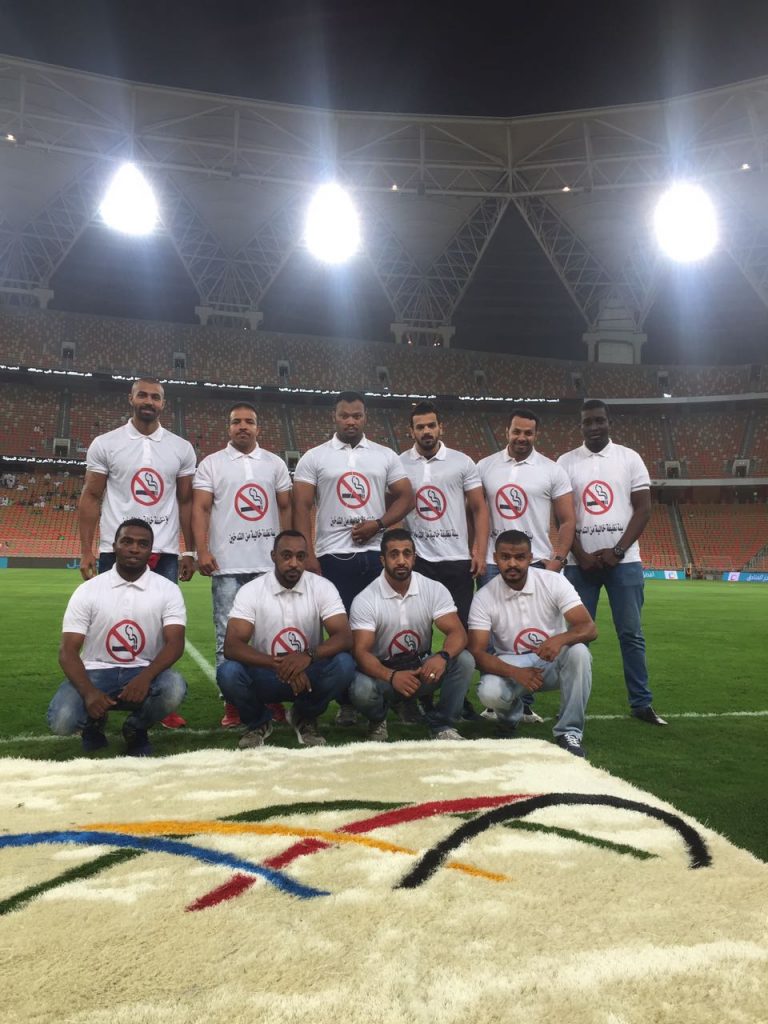
You were also responsible for re-writing and developing all operational safety plans for KASC’s new 10,000-seat arena, which included implementing Saudi Aramco Safety Policies. Can you tell us more about this process and what these Safety Policies include?
When I arrived, KASC already had safety plans for the stadium. A consultancy company from the UK had done a very professional job with this. The problem I faced was that this was a new facility and what was written down didn’t necessary fit the organisation, the facility or the culture. I first needed to sift through the plans, understand them and work out if, in reality, the procedures laid down were workable on the ground. I also needed to give these processes time to evolve and develop. I had the blueprint and a good platform to build from but it became obvious after 6-9 months I had a set of safety/emergency plans but they were not suitable and not unfortunately didn’t fit into the KASC structure or organisation. They were suitable for most stadiums within the UK or even Europe, but definitely not for a Stadium in Saudi Arabia, I needed to adapt the plans and make them workable for KASC. I also needed to include non-event day procedures and as the operation and maintenance of the stadium and the Sports Hall was the responsibility of Saudi Aramco I had to factor in and integrate many of the procedures Aramco include in their Safety Plans. This was a very time consuming undertaking and I was the only person who could do it. The other challenge was to persuade Aramco Loss Prevention and Fire Department that what I was trying to create was an Emergency/Safety stand-alone document unique to the stadium and not designed for an oil or gas installation. I also had to integrate FIFA recommendations and industry best practices (Green Guide) too. The whole project took maybe 9 months to complete. I then had the document translated to Arabic and issued to all the key personnel like the Police, Civil Defence and Medical Services. There wasn’t much time for family in the first year, I spent every spare minute at the stadium, the games came thick and fast.
The Sports Hall/Arena opened over 12 months after the Stadium in October 2015. I knew once I had finished the Stadium Safety Plans I had to write the Arena Safety Plans in time for the opening (3 Day WWE Shows). I adapted many of the plans for the stadium into the Arena plans. The evacuation strategy is much the same as the stadium but the main difference is the type of show, the evacuation routes for the arena floor vary from event to event depending on the stage position, shape and location and if the arena floor is standing or seating. Other additions are laid down in the Purple Guide like the ‘show stop’ procedure. We hosted the WWE for the first event in the Arena on 5th Oct 2015. Prior to the show starting I initiated a full fire and emergency evacuation drill, trained all the stewards and Police and invited Saudi Aramco Fire Prevention and Loss Prevention to witness it. Again, I had the plans translated to Arabic and distributed them to the key personnel.
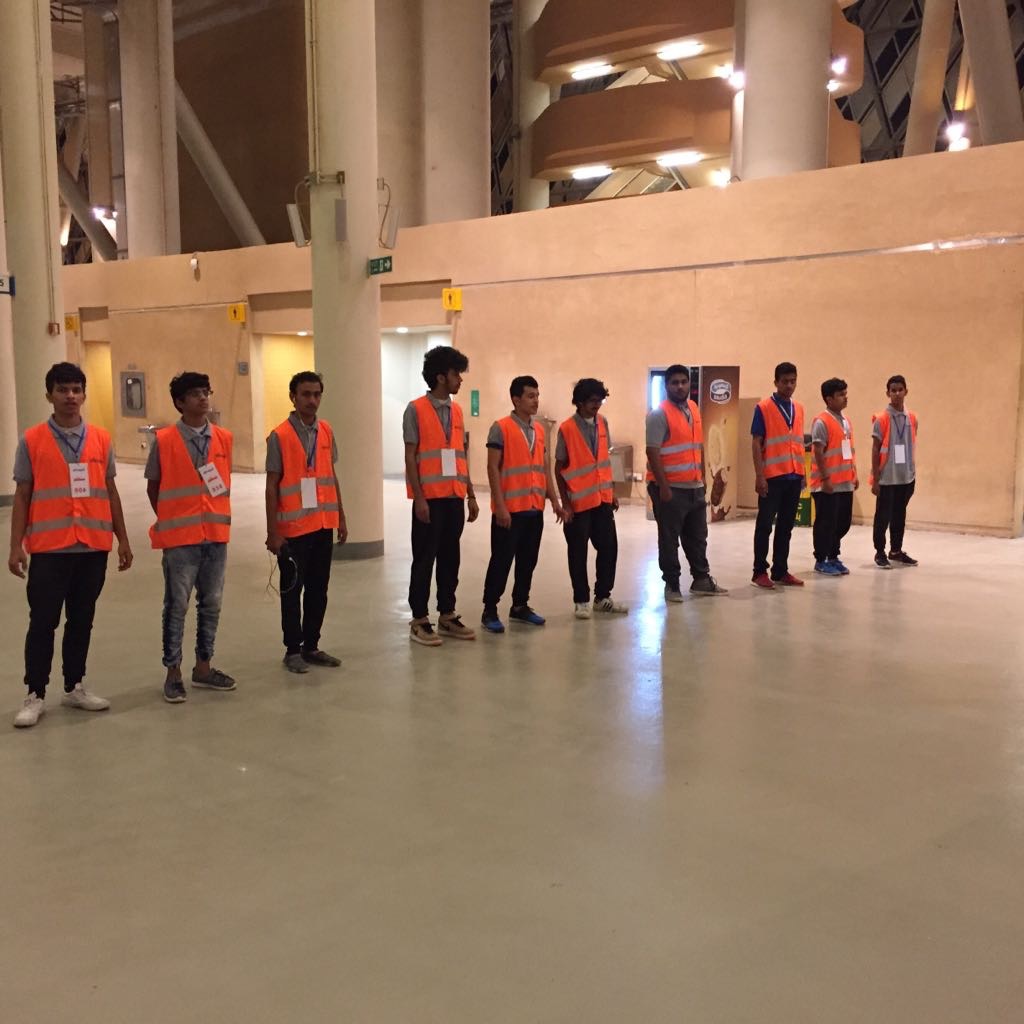

When it comes to safety and security, in hindsight what in your opinion could have been done in the build/design phase but wasn’t?
With the benefit of hindsight it is easy to assess what should have been done in the design/build phase but for whatever reason wasn’t. More often than not it is cost and time that dictates this, and in King Abdullah Sports City’s case that was certainly a factor. However, there are several safety and security issues overlooked that should never have been.
- The Turnstiles and Entry System
I don’t know how on earth they were approved, but the design of the turnstiles contradicts every fundamental and basic recommendation/guideline. Not long after I arrived I submitted a proposal to have them changed, the evidence was conclusive, but by then it was too late and there would have been a substantial cost involved.
The main design issues are;
- They all have an enclosed pen susceptible to the risk of overloading and a possible crush
- They all have huge heavy duty gates that are easy to climb and open onto the crowd
- The crowd is forced to change direction twice on entry in a confined space
- Fraudulent tickets can easily be passed through the fence
- The low level walls promote climbing, illegal entry and present a definite security risk.
- The crowd ingress and egress into the same space
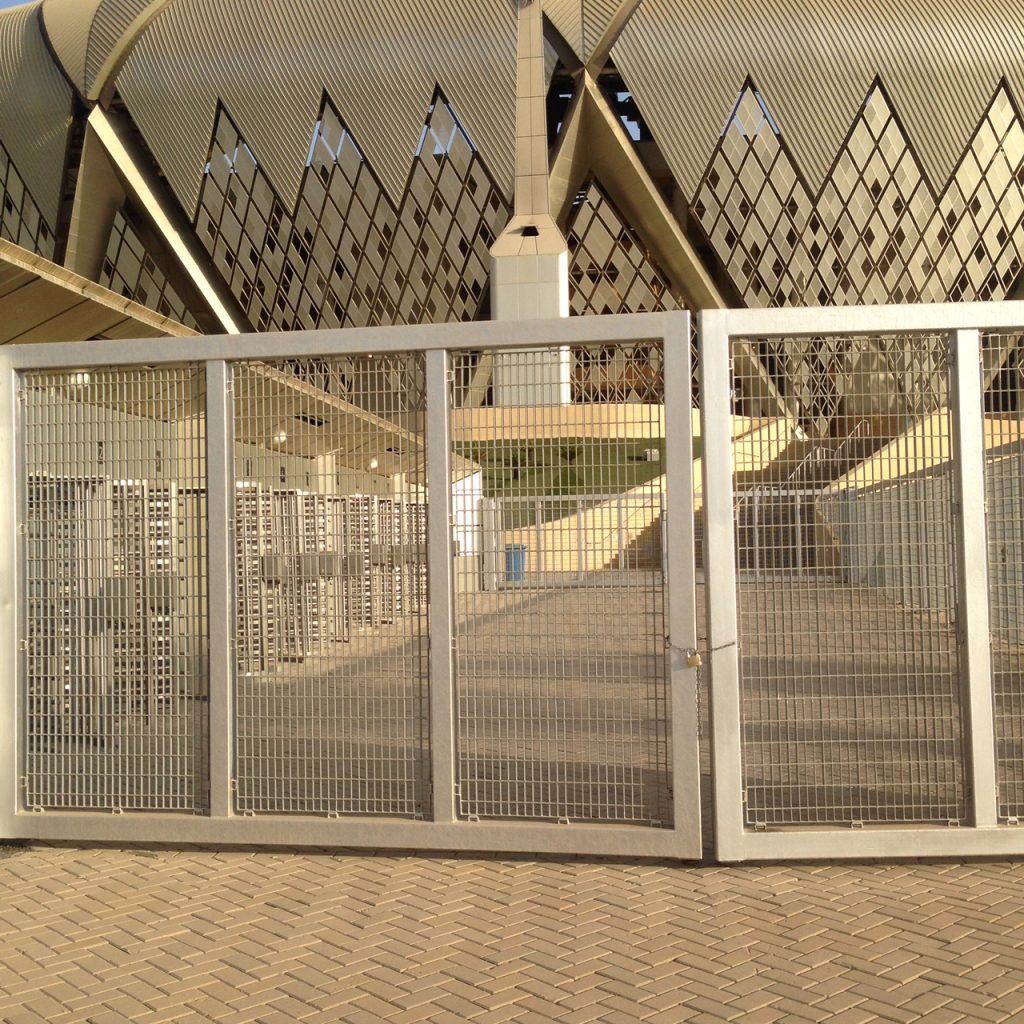
- Spectator seats
The hard core supporters or ‘Raptr’ (as they are referred to) of both teams are located left and right of the Royal Box on the lower tier. The control of this area is difficult. It is often overcrowded and the stewards struggle to manage this area. Even after constant requests the Police provide minimum support. The fans stand on the seats and many stand on the backs of the seats. Many of the seats snap at the weak point which is half way up the seat back. We replace approximately 300 seats per season in each area. If someone had profiled the crowd in the design phase this issue would have been highlighted and a more robust seat would have been recommended for this area.
- Concrete bollards
All around the external concourse we have concrete bollards as a security and safety caution. This is to prevent vehicles getting to close to the stadium. Unfortunately, these 3ft bollards are easily moved. Again, if more thought had gone into this issue in the design and build phase then we would not be faced with moving them back to their original position game after game. At the end of games, drivers often get out of their cars and move the small bollards due to the traffic congestion and make a speedier exit via the Royal Plaza. Not only is this very dangerous but it is also a big security risk. Permanent bollards should have been installed during the design/build phase and this item should have been highlighted then.
- Security Arches & Canopies
After the issues in Paris and the increased terrorist threat in the region it was decided to buy airport-style security arches at all the turnstiles. Every game they are brought out and installed then they are removed after the game, again this should have been considered in the design/build phase and fixed arches should have been installed.
We have also installed canopies at all the turnstile entry points to protect the Police and Stewards from the blistering sun in the summer months. The Police/Stewards are stood out for hours on end in the heat. This issue should have been highlighted in the build phase but for whatever reason was not.
- Unprotected Walls
Many areas of the Stadium, but especially on the upper tier, have unprotected walls. Spectators sit and many stand on these walls. Some of the walls have a sheer drop of up to 20m. It is only a matter of time before a spectator falls and is seriously injured. Fortunately, I have recently completed a project to stop this happening, but there is still an outer wall that poses a risk to safety. The cost of the project was somewhere in the region of $375,000. Again, this cost could have been avoided if it had been dealt with in the design/build phase.
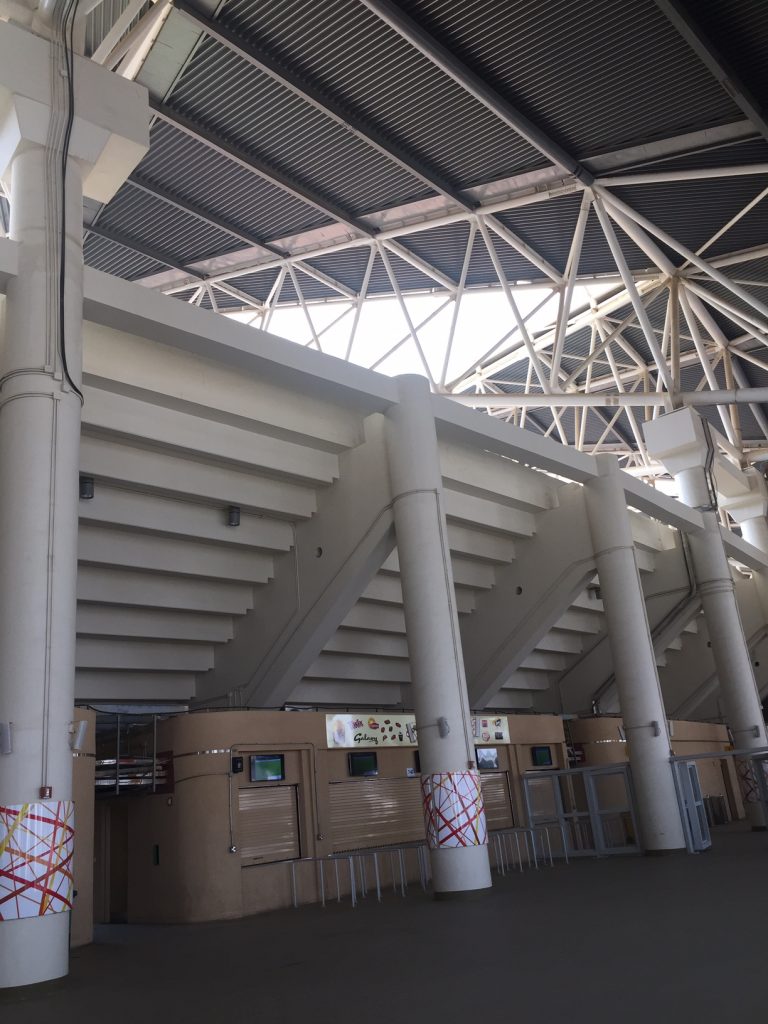
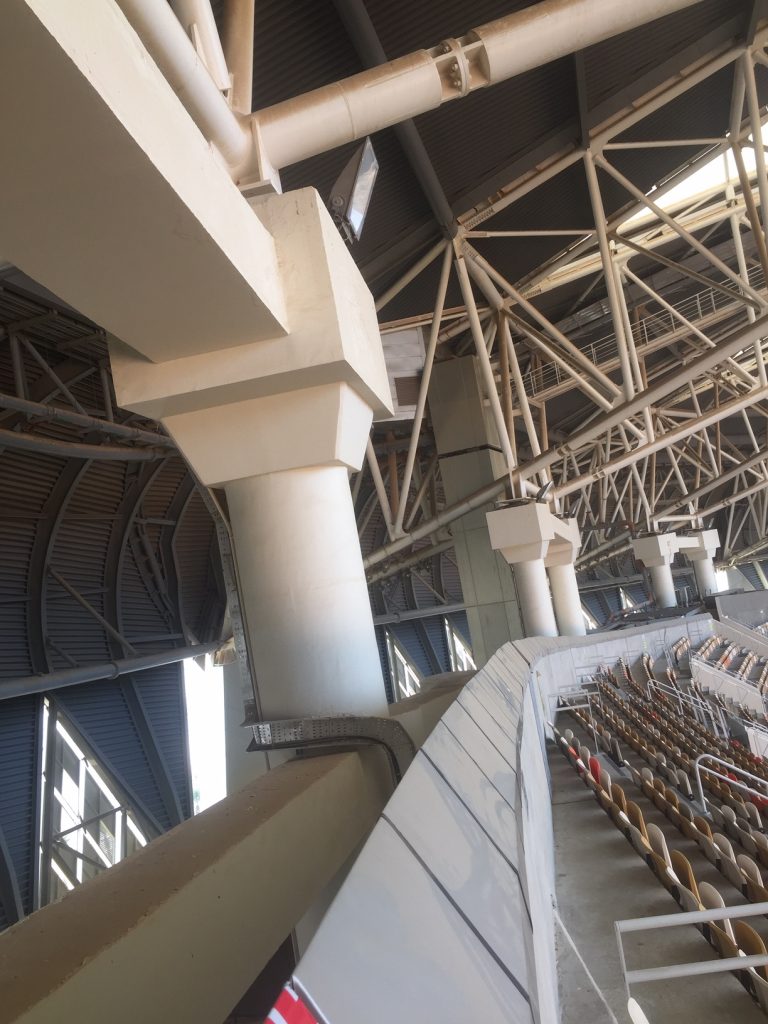
In my opinion, these fundamental safety and security issues highlights some poor design decisions and a lack of thorough research into the spectators and the operator’s needs. It highlights the reliance of the Proponent on the Consultants. If a comprehensive profile of the end user had of been conducted, i.e. a crowd profile and a thorough safety/security analysis, then these and other costly modifications would have been highlighted and resolved before the first game took place. As they were not, costly enhancements have had to be designed, approved and installed, meanwhile while this process is taking place the safety of many spectators have been at risk.
What (if any) lessons learned from your Royal Navy background, coupled with your work for LOCOG as Deputy Venue Manager for the Olympic Park, have informed how you do your job at Saudi Aramco?
I spent 22 great years in the Royal Navy. I was a Physical Training Instructor for the vast majority of my military career involved in sports organisation. Any sport from Table Tennis to Athletics and from Volleyball to Basketball I have played, officiate, coached and more importantly I have organised events and tournaments in all these sports. This has been an advantage when it comes to the Sports Hall Arena, its facilities and the different organisations that want to use them, as I have a better understanding of their needs than most.
On a personal note, I think the qualities that a military person takes for granted; like having an inbuilt commitment and determination to get the job done. I have needed to draw on that military attitude to accomplish every goal. I think ex-military people have a natural air of authority, a confidence in their ability and a strong and positive mental attitude when the going gets tough.
When I arrived in Saudi Arabia, having left my wife and children back in the UK, I was faced with probably the toughest challenge of my working life. I arrived during Ramadan, it was blisteringly hot and everywhere was closed down. The whole country was fasting and trying to get anything achieved was, at times, excruciatingly difficult and frustrating. I had no residency permit, and without that you can’t get a phone, a bank account or hire a car. I was in Saudi Arabia, I knew nobody. The support from Aramco is more geared up for expats on the Eastern side than it is on the Western side. I had a new culture, new language and new job to cope and adapt to, plus I had my wife and children arriving in little under 8 weeks. I had no house and no school, so the pressure was really on! There were many occasions, especially in the early days, when I seriously considered going home, but eventually I came through all of that and I’ve now completed 3 years, but honestly speaking, I wasn’t sure if I would complete 3 weeks at one stage. I was faced with many challenges in my Royal Navy Career, and in the initial months I was able to draw on those experiences to get me through. The other assets I think a military persons has is a high degree of loyalty and the ability to work with others, but I would say after loyalty the ability to adapt and overcome is the overriding quality the Royal Navy gave me that was of paramount importance to me.
Being Deputy Venue Manager for the Olympic Park Common Domain was one of the highlights of my working career. My time with LOCOG was beyond my wildest dreams. I was a keen athlete in my youth, I grew up admiring the likes of Coe, Ovett, Cram, Wells and Daley Thompson, so to be involved in the Games to the extent I was, was as good as it gets for me. I had just finished my Foundation Degree in Crowd Safety Management at the time, and I applied for a role involving crowds in one of the venues. I initially thought I was going to manage the Copperbox (handball arena) but on my first day I was told that I was one of the Deputy Venue Managers for the Common Domain, basically all the spaces between the venues in the Park including the Livesite and the Opening and Closing Ceremonies. There were many challenges, but I was part of the amazing Event Services Team. The whole experience will live in my memory forever. Even when I was off duty, I would wander into the park and watch some of the events. I was lucky enough to be track side and see Hussein Bolt win 100m gold, poolside to watch Michael Phelps win gold and witness many other history making moments, including several of the British gold winning performances in the Velodrome.
During my time in the Olympic Park, I was heavily involved in the Livesite Area. This was the public space in the middle of the Park with the huge screen. The river ran through the site and spectators were able to watch the competitions unfold whilst sitting on the grass in the sunshine. The site evolved from a park-type facility in the morning to a festival style site in the afternoon when all the British high profile events were shown. Super Saturday was a great example of this. The problem was there wasn’t a plan to manage the transformation from park to festival. I was heavily involved in initiating contingency plans to manage the 10,000 people that ended up flooding into the area on a daily basis. After LOCOG, I went back to my Royal Navy recruiting role and decided to complete my BA Honours in Crowd Safety Management. I used my experiences from the Olympics in two of my assignments and my analysis of the Olympic Park Live Site Area earned me 91% and a ‘First’. My boss from the Olympics sent me an email several months after the Games had finished and a link to a job in Jeddah, KSA. The rest as they say, is history. So I have so much to thank the Olympic experience with LOCOG, the Games has dictated mine and my family’s path for the rest of our lives.
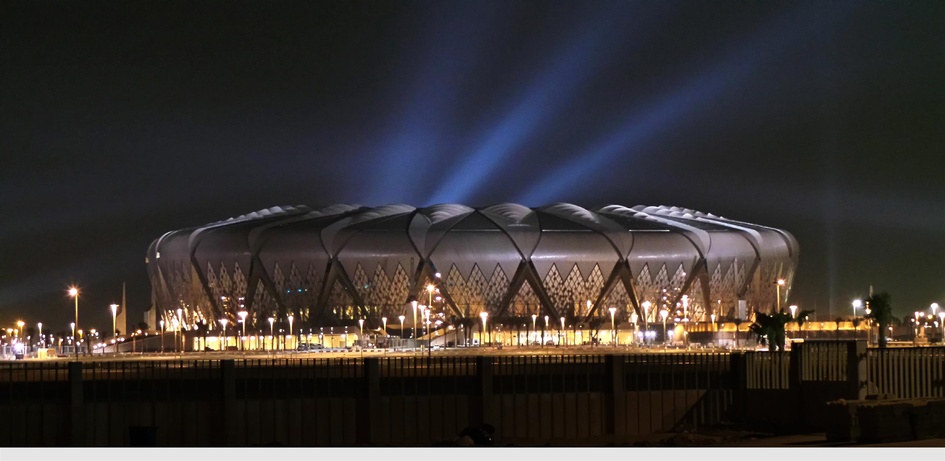
You must have witnessed a number of changes in the Sports Venue business over the last 3 years, at King Abdullah Sports City. Which have been the most important advancements and why?
I can only comment on the changes I have witnessed here at King Abdullah Sports City and yes, I have seen many. To see where we have come from to where we are now is just extraordinary. I am proud of all the enhancements I have initiated, and I am proud that on the whole my ideas and initiatives have been acted on, the funding has been found and we have been able to deliver a safe and enjoyable environment to watch sport. It’s difficult to say which have been the most important. I eliminated the flare problem, and worked hard to convince the Police to trust my idea. I’m convinced we would still have a flare problem and it would be part of the fan culture and accepted just like it is in other countries if I hadn’t of persisted with this. Influencing a culture is huge, and by doing so I have made the stadium a safer place. I convinced the Police to lower the pitch fence to its horizontal 90 degree position for smaller games and to install segregation lines for the bigger games to help separate rival fans.
Designing a brand new wayfinding system has given me enormous satisfaction so have the safety enhancements on Level 5 to stop spectators falling. Writing emergency plans, although time consuming and then getting them translated has given me immense satisfaction. There are so many. I suppose seeing the stewards develop and become an efficient organisation that understand their role and responsibilities. I am a people person, I love the interaction and the banter with all the Stewards and their Supervisors. I get great satisfaction when I no longer have to prompt them, when they do things naturally and develop their own unique ways of doing certain things. I love their enthusiasm, their questions and that they are never afraid to ask. Saudi Arabia has a big drive towards ‘Saudization’, the population is young (70% under 31) and the unemployment rate amongst the youth is high, so to see young Saudis develop and progress and to have had an input into their development and help the country in some small way to achieve its 2030 Vision objectives is very rewarding. To leave a legacy at King Abdullah Sports City after I have gone will mean a great deal to me.
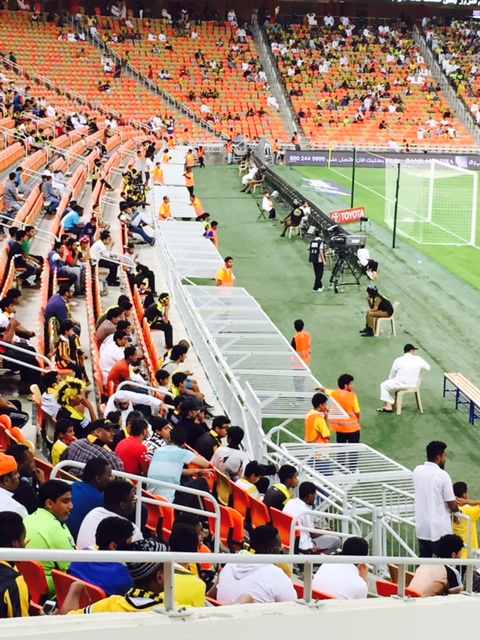
Recent enhancements at KASC included turnstile reconfiguration design, crowd safety barriers, a new way-finding strategy, ECC CCTV monitors, PAVA messaging, large screen spectator messaging and the installation of emergency assembly points. What kinds of deliverables do these enhancements ensure in terms of your Safety & Security Plan? Are there any additional planned developments/enhancements or do you feel you now have the right mix to ensure a safe and secure environment at KASC?
All these enhancements improve spectator safety. Monitoring of the crowds is paramount to the safe management of the densities and the movement. If you are unable to monitor the crowd you cannot preempt the pinch points and the developing problems. Knowing where they occur and when they occur is also of vital importance that is why understanding the culture is also important and knowing the profile of your crowd is key to understanding their movement and their reaction to certain situations. Information is one of the key factors that affect the crowd. All the good evidence and research argues that if you starve a crowd of information it will be confused, agitated, frustrated, anxious and fearful. Provide a crowd with information and it will have the ability to make a decision. So providing the right information to the spectator is vital and that is why the use of assets such as the stadium PAVA messaging, large screen messages and other messaging mediums like Facebook, Twitter, etc., are good tools and should be utilised. During the Inauguration Ceremony in King Abdullah Sport City in May 2014, the crowd was left in the Arabian heat for hours, the game was due to kick off in two hours and there were 80,000 people waiting at the outer perimeter gates to get it, many without a ticket. They were starved of information. The Police didn’t know when they would be allowed in and none of the spectators knew a thing about the entry process. It was inevitable the crowd was going to react, and they did!
Staying with the subject of ‘information’, one of my major achievements has undoubtedly been the redesign of the wayfinding signage in the Stadium. Shortly after I arrived, it was very obvious that to find your seat was a nightmare. Even with my experience I struggled to figure it out. It was confusing and complicated, so I set about redesigning it. I changed the colour-coding zones to more vibrant colours and reduced the zones from 8 to 6. I excluded brown and pink, these colours, including orange, all look the same once the Arabian dust, sand and heat has eroded them. I also split the colours up so that no two similar colours like yellow and orange were next to each other. The blocks were all split down the middle, so I changed this and made them all one block and used the hotel room system, similar to Wembley and Camp Nou, i.e. all the blocks on Level 1,3 and 5 are numbered 101,102, 303, 304, 505, 506, etc. The signage was in English, this didn’t make sense as 95% of the audience was Arabic. So I used numbers and Arabic and used the direction that Muslims walk around the Kabba as the flow direction. I also came up with the acronym PEOPLE OF BELIEF RESPECT YOUR GOD: PURPLE, ORANGE, BLUE, RED, YELLOW, GREEN. As Saudi is a deeply religious county I wanted to add an Islamic connection, and make it a bit more personal to the fans. The whole project took approximately 9 months to complete. I now believe KASC has a wayfinding strategy fit for purpose, but also a unique, intimate system with thought and colour which adds to the vibrant aesthetic appearance of the stadium and is simplistic in its delivery. It does what it’s meant to do – get you to your seat as quickly and effortlessly as possible without stress or confusion.
Proper crowd barriers, stewarding uniforms, assembly points and all the messaging systems I believe collectively gives the spectator a sense of assurance. You need to send the message out that their safety is taken seriously. I’ve also insisted on all the stewards looking smart and in a uniform with high visibility coats on. This also conveys the same message and gives the Stewards a sense of pride, responsibility and ownership. Sometimes little things can make a big difference.
My most recent achievement is putting in place a preventative measure to stop spectators sitting on our Level 5 (Top Tier) Inner Spectator Wall. During larger games (over 45,000) spectators would sit on this wall, some with crossed legs and some would even stand. This wall is approximately 20cm across and at its highest point has a 20m sheer drop at the back. For me it was only a matter of time before a spectator was nudged off the wall and fell to his death. This long term project has now been completed and I am filled with immense satisfaction and pride when I look out of the Event Control Room (ECC) and now I see nobody sitting on this wall and at risk of falling. Other initiatives have included the elimination of flares as I’ve already mentioned, and I have banned plastic screw top bottles (only opened flat top cartons are allowed). On odd occasions depending on the result some stupid fans would throw plastic bottles with water onto the pitch.
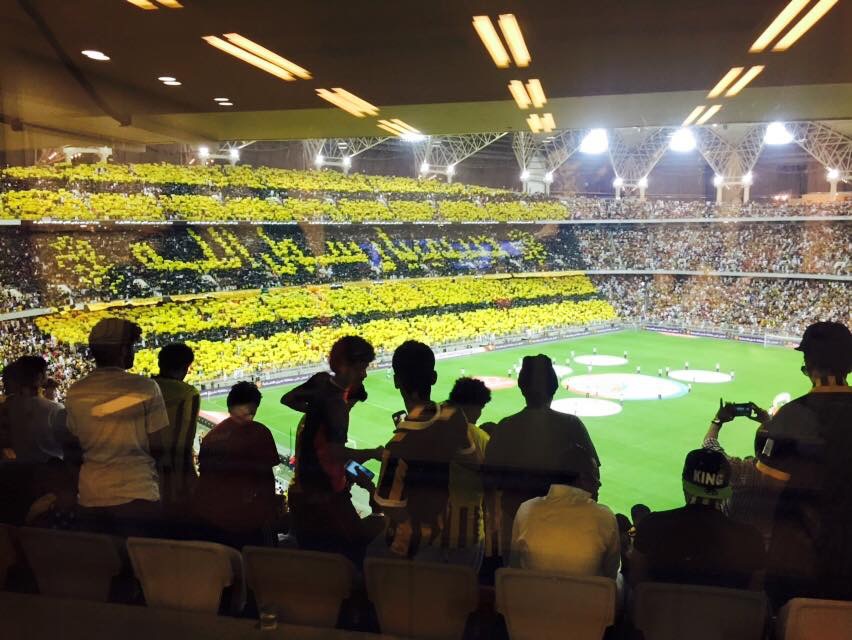
What kinds of technology, products, solutions, etc., would be top of your wish-list moving forward?
I can only speak for King Abdullah Sports City and related to safety and security. The stadium has come a long way since 2014 but there is still work to be done and improvements to be made. Keeping up with security and safety has to be a priority. Spectators and especially terrorists are always looking for so called ‘soft targets’ and the day one becomes complacent and relaxed about safety and security is the day you are most vulnerable. Getting things accomplished in the Kingdom takes time, and approval for funding and company red tape sometimes takes longer. You have to find the balance between what you would like to achieve and what you can achieve. The two are sometimes miles apart, so you have to lower your expectations sometimes and constantly evaluate the priorities. If you succeed great, but if you don’t then you need to learn not to take it too personally. With support from the Management I have succeeded in most safety and security initiatives I set out to achieve and given longer I’m confident I would eventually achieve all my goals.
There are many more things on my KASC wish-list, but here are just a few:
- Permanent airport-style security arches installed at all entry points
- Replace all turnstile fences with a more robust 3m anti-climb fence (Proposal submitted and approved)
- Permanent steel bollards replace the movable concrete bollards (Proposal submitted)
- The turnstile entry turned 90 degrees (Never going to happen!)
- Upgrade of all CCTV cameras – all tilt and zoom and better quality in some more vulnerable areas
- Further safety measures installed on other high risk walls prone to falling
- Make KASC the Centre of Excellence for Event Management & Event Safety and introduce recognised industry courses, qualifications, licensing and certification to the Kingdom
- More frequent fire and evacuation exercises conducted by the authorities
One of my biggest wishes would be to have a ‘Families Section’ at the stadium. At this moment in time no women are allowed in. I’m sure it is just a matter of time, but it would be fantastic to see women enjoying the games too. I have a young daughter of 11 years old and she would have loved to watch a game here.
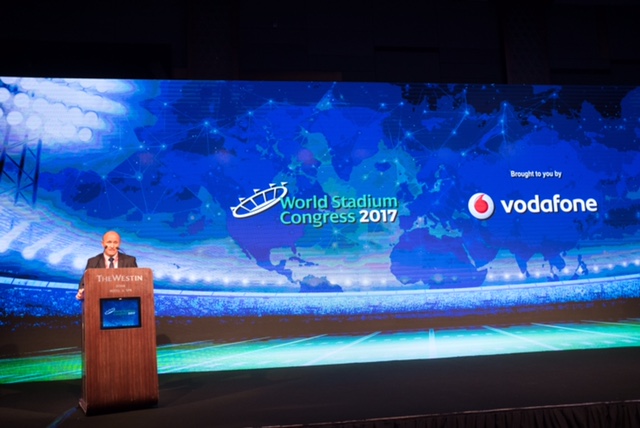
How important is knowledge-sharing between industry peers?
Knowledge-sharing is very important but I think companies involved in safety and security are very protective of what they do and how they do things. Many are reluctant to give away their methods of operation for fear of a rival capitalising on it. This is why world forums and congresses like the World Stadium Congress in Doha in May and ESSMA summits are vital to keep the industry up to date forward moving. Forums cost money to put on and only come around once a year this is why industry magazines and online websites like sportsvenuebusiness.com are an essential tool in the interim. Sharing ideas, sharing methods and knowledge can save lives, it’s that simple! If there is anyone in the industry who wishes to tap into my knowledge and experience especially if they are considering coming to the Middle East or Saudi Arabia then I am only too happy to help. I wish someone was available or on hand to offer me that support when I arrived. Having said that, if I knew then what I know now, I’m not sure I would have boarded the plane!! (Joke)
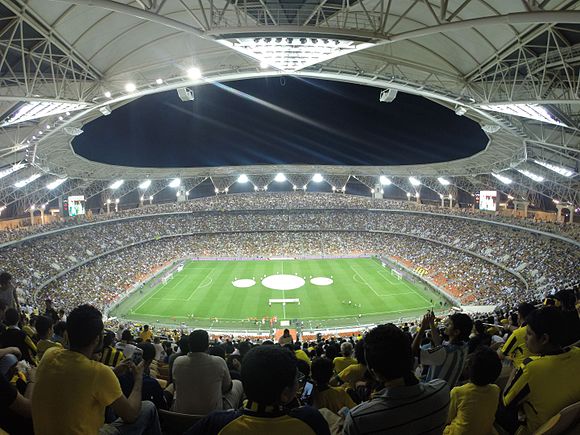
How do you see the sector, particularly in regards to safety & security, evolving over the next 5-10 years? What technological advances would you like to see?
I feel that King Abdullah Sports City has come such a long way in such a short time. As I said previously, sustainability is one of the key elements to achieving long lasting stability. But I would like to see the progress made here extended to other stadiums in the Kingdom. When I leave I would like the momentum, philosophy and safety culture that I have established to grow, progress and be enhanced further. I would like to think that the work I have done be the foundation and benchmark for safety in sports grounds in Saudi and the Middle East. I believe KASC now ranks alongside some of the more well-known stadiums in Europe in terms of its safety standards and safety record. There are still some issues that surprise me and some decisions made that raise my safety alarm bells, but KASC is in a good place and I am very proud to have played my part.
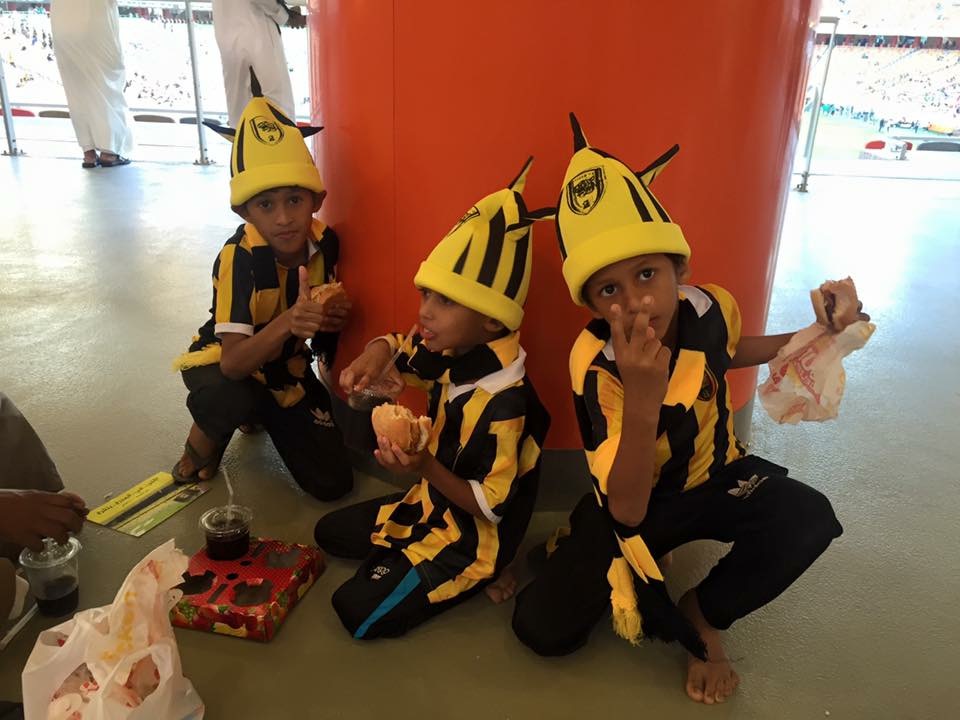
Where do you see yourself in 5 years’ time in regards to your career and development?
I have been at King Abdullah Sport City and with Aramco now for 3 years. My wife, children and I have had an amazing experience. My kids can read and write Arabic, we have made great friends, done some amazing things and as parents I believe we have enjoyed the children at the optimum time. They are full of confidence and unfazed by any obstacle put in front of them. They are profoundly aware of cultural differences and have enjoyed a safe and fun filled education and a privileged lifestyle that they do not, nor ever should take for granted. This has to be my biggest achievement. We have learned so much and we can look back and reflect on what we have done. But also we are now looking ahead and we are ready to move on.
At the end of this football season we have decided to take another leap of faith and move to Dubai. I would like to be involved in not only football but also other events, concert, and festivals, maybe Expo2020 or the World Cup 2022. I would also like to experience other parts of the Middle East other than the KSA. I also want to reach my full career potential, and I think that whilst I am with Aramco I may find this difficult. There is only one stadium that Aramco is involved in so I’m therefore tied to King Abdullah Sports City and I would like to take my knowledge and experience to the wider region. I think there are many stadiums who could benefit from the lessons learnt at KASC. I still love the buzz of the big football stadiums and the unpredictability of crowds so I can always see myself involved in stadiums and with the Qatar World Cup fast approaching I would like to think I have a lot of knowledge and experience to assist in some way.
But for the moment, after 120 games at KASC and managing 3.5 million spectators in through the gates and out again it’s the right time to move on, take a breath and, reflect on how far we have come as a family and how far I have come individually from a career and personal perspective. It’s now time to start writing a new chapter.
I would like to personally thank all those who have helped and supported me throughout this incredible journey and I would like to thank my close friends back home in the UK for their loyal support. The biggest debt of gratitude without a doubt goes to my wife Abigail, her unwavering positivity has been the key to where we came from to where we have arrived.
What advice would you give to someone about to embark on a similar career path?
I would say do it. But I would also say, be prepared to be challenged like you have never been challenged nor likely to be challenged again. It is incredibly rewarding and you will open doors and learn so much about your job and about yourself. I would also say that you must believe in yourself and your ability. You must stick to your principles and if at the end of your time you can look back with pride having made a real difference, having done everything in your power to keep your spectators safe, and to leave a lasting legacy for those behind you to build on then that’s the best you can hope for. But, if you don’t take a chance you will never know.
Ian Hardcastle will be moving to Dubai in July and intends to set up ESMME (Event Safety Management Middle East). For further information, contact Ian direct via email at: ian.esmme@gulfcrewing.com or via his Linkedin profile.
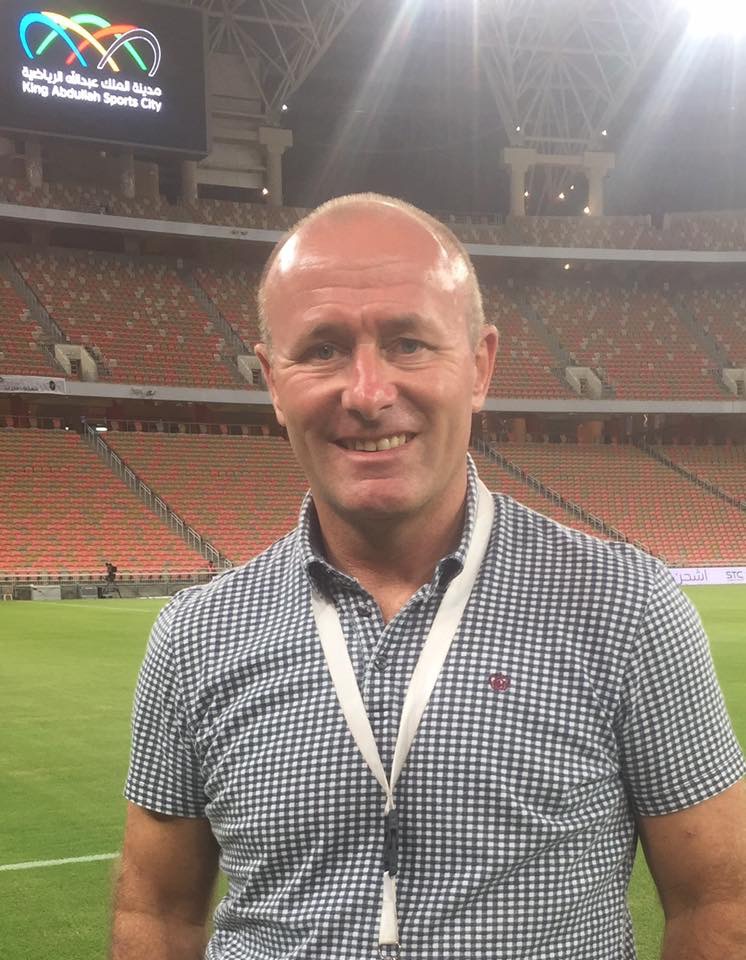
About Ian Hardcastle
Ian will be joining the GCC Team in July, where he will be heading up the Gulfcrewing H&S department – Event Safety Management Middle East (ESSME).
He has just completed three years at King Abdullah Sports City, where he was Event/Crowd Safety Manager. Ian was responsible for the complete spectrum of Spectator Safety at the KASC, 60,000-capacity, all-seater stadium, and the 10,000-seat indoor arena. In three seasons he has managed 125 games and coordinated the safe entry and exit of over 3.5 million visitors.
His responsibilities included Event Control Room Commander and the full scope of all emergency response planning, training and documentation.
Prior to King Abdullah Sports City, Ian was a Deputy Venue Manager in the Olympic Park for the London 2012 Games. After completing a full career in the British Royal Navy, Ian worked at Manchester United involved in match day operations, team security and close protection duties.
Ian has been involved in many larger events, including Glastonbury, and in 2013 he graduated from Buckingham New University with a First class Honours Degree in Crowd Safety Management.
